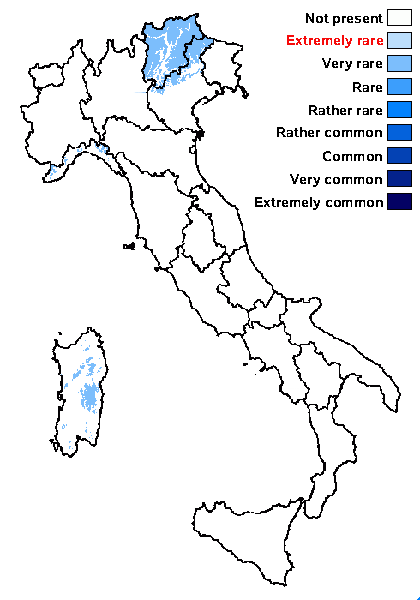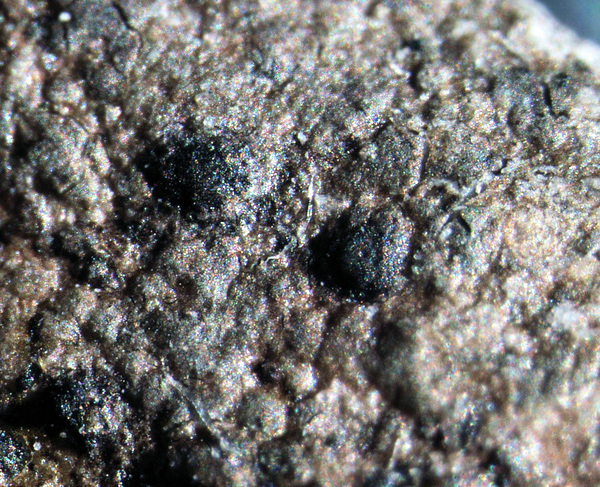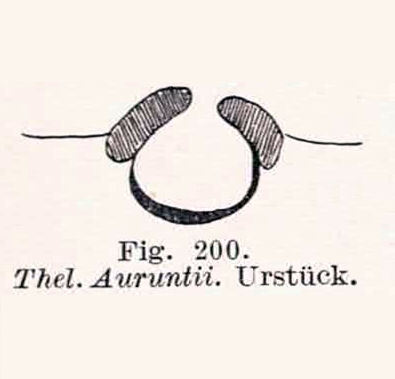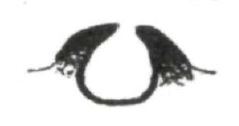Thelidium auruntii (A. Massal.) Kremp.
Denkschr. kgl. bayer. bot. Ges., Abt. 2 4: 248, 1861. Basionym: Verrucaria auruntii A. Massal. - Symmicta Lich: 77, 1855.
Synonyms:
Distribution: N - Ven (Lazzarin 2000b, Ravera & al. 2021), TAA (Nascimbene & al. 2022), Lig. C - Sar.
Description: Thallus crustose, thinly episubstratic, more or less continuous, dark brown to almost black. Perithecia black, sparse, 0.3-0.4(-0.5) mm across, half immersed in the thallus, the emerging part hemispherical, smooth, sometimes slightly flattened at top. Involucrellum limited to the upper half of the perithecium, adpressed to exciple; exciple brown to brown-black throughout; hamathecium of periphyses and periphysoids, interascal filaments absent; hymenial gel I+ red (I+ blue at very low concentrations of I), K/I+ blue. Asci 8-spored, ellipsoid to clavate, I-, fissitunicate, the wall thickened above, with an ocular chamber, dehiscent by extrusion of a delicate rostrum. Ascospores 1-septate, hyaline, ellipsoid, 23-35 x 9-12(-15) μm. Photobiont chlorococcoid. Spot tests: K-, C-, KC-, P-, UV-. Chemistry: without lichen substances.Note: differing from T. pyrenophorum in the well-developed, brown thallus and the smaller spores, this species, also known from Scandinavia, grows on limestone, dolomite and calciferous schists in upland areas.
Growth form: Crustose
Substrata: rocks
Photobiont: green algae other than Trentepohlia
Reproductive strategy: mainly sexual
Commonnes-rarity: (info)
Alpine belt: very rare
Subalpine belt: very rare
Oromediterranean belt: very rare
Montane belt: very rare
Submediterranean belt: absent
Padanian area: absent
Humid submediterranean belt: absent
Humid mediterranean belt: absent
Dry mediterranean belt: absent

Predictive model
Herbarium samples
Growth form: Crustose
Substrata: rocks
Photobiont: green algae other than Trentepohlia
Reproductive strategy: mainly sexual
Commonnes-rarity: (info)
Alpine belt: very rare
Subalpine belt: very rare
Oromediterranean belt: very rare
Montane belt: very rare
Submediterranean belt: absent
Padanian area: absent
Humid submediterranean belt: absent
Humid mediterranean belt: absent
Dry mediterranean belt: absent

Predictive model
| Herbarium samples |
 Index Fungorum
Index Fungorum
 GBIF
GBIF






